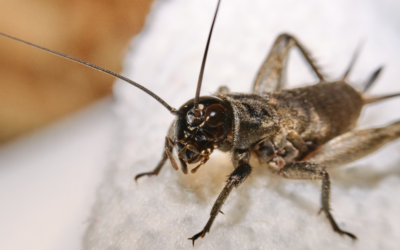What are spider crickets?
Spider crickets, often called camel crickets or cave crickets, earn their name from looking like spiders and from their ability to climb and stick to walls. And perhaps, because they enjoy living inside those walls and under your home.
However, despite their spidery appearance and behavior, these creepy critters are, in fact, a type of cricket with long legs. They’re also known for jumping really high (up to six feet!), which can be pretty freaky if you’re not expecting it. So make sure you know how to identify a spider cricket when you see one.
Aside from looking like spiders and jumping at you, there are other reasons you don’t want spider crickets in your house. Unfortunately, it can become more than a mere nuisance if you find these accidental invaders making your home their own.
People often ask—What do spider crickets look like? Will a spider cricket bite humans? Are spider crickets dangerous? Can these crickets cause damage to my home? And lastly, if you already need cricket control—How do I get rid of spider crickets?
Read on to find out.
What do spider crickets look like?
As previously mentioned, spider crickets are long-legged insects that somewhat resemble spiders. They are not, however, members of the arachnid family. This cricket species ranges from brown to black, although their larvae can have a somewhat translucent appearance. They also have long, thin antennae which tend to be close to each other on top of their heads.
They have large, powerful back legs for jumping, like other crickets. However, these crickets do not have the sound-producing organs that other species do. And watch out—they may jump at you!
It’s safe to say that if you see an insect that looks like a spider but has long antennae, it’s likely a spider cricket—and not the kind that makes chirping sounds.
Do spider crickets bite?
Whether or not this scary-looking cricket will bite a human is debatable. While some people say they don’t, others can attest to the fact that they have been bitten by a spider cricket.
To make matters worse, when they feel threatened, they tend to jump right at you. For example, when a spider cricket, aka camel cricket, jumps, it’s like a camel spider, quickly covering a great distance. It’s a defense mechanism that can be pretty terrifying.
When a spider cricket bites you, the best action is to wash the wound with soap and water. If you experience any swelling or redness, you may be experiencing an allergic reaction. If you have a strong reaction to a bite, consult a doctor immediately.
As a general rule, they tend not to pose a physical threat to humans. However, if they invade your home in large numbers, it can be a severe problem. If you find yourself with a spider cricket infestation, the best course of action is to contact a professional pest control company to have them removed.
How do I know if I have spider crickets?
People often discover they have a large infestation when going into the crawl space of their homes for regular maintenance. There are plenty of occasional invaders and household pests you could encounter in these moist environments. And spider crickets live and thrive in damp areas, as do many other pests. It’s likely how they also earned the name “cave crickets.”
If you are under your house, chances are that you aren’t there for fun. Some people only find out they have large infestations when they’ve called pest control services out for other reasons. Imagine going into a dark crawl space with fairly large bugs jumping directly at you.
Don’t worry; our professionals know what to expect when going into a damp, small space. They understand insects and their behaviors. So put away the vacuum cleaner or bug spray and let our professionals get rid of pests for you.
While spider crickets are not aggressive, they can become so without food sources. Although the aggression is likely out of self-defense, an aggressive infestation is not one you want to experience.
Can spider crickets damage your house?
Spider crickets are known for their voracious appetites. They consume fungus, textiles, carpets, wood, cardboard boxes, dust, plant matter, and even each other. The bug’s mandibles are quite powerful and can chew through a wide variety of items in your home.
If left unchecked, this cricket species can cause substantial damage to your house and its belongings. If you notice spider crickets outside, take care not to let them inside, and make sure crawl spaces are well protected. A good offense is the best defense.
These crickets will readily move inside for protection from the intense summer heat, especially after establishing themselves in and around your house. Excellent nest opportunities may be found in crawl areas and basements. If you find any signs of nests or spider crickets, you have a problem that must be addressed.
How do I get rid of spider crickets in my house?
The best way to make sure you don’t have an active infestation, avoid future insect invasions, and not find yourself staring down a spider cricket is to have regular pest control services.
If you don’t currently have service, schedule a free inspection with 855Bugs today.
We’ll keep the creepy crawlies at bay and help protect your home from insect invaders.


